Can You Spray Paint Fabric? [ 2024 Complete Guide ]
Have you ever seen those cool spray-painted fabric projects on Pinterest and Instagram? But can you do that without damaging your fabric?
Yes, you can spray paint on fabric! You can use all sorts of other products on fabric too, like acrylic paint, dye, and ink. If it sticks to the fabric (and most things will if you’re patient), it’s worth a try. I’ve even used nail polish on fabric before with some success (although there was some slight staining after washing). With the right technique, it’s surprisingly easy to do.
Spray painting is a popular method for painting fabric, but it’s not the only option. Each type of paint has its own set of pros and cons. So, how do you spray paint fabric? Keep reading to find out!
Can You Spray Paint Fabric?
Spray painting fabric is a great way to add color and design to any project.
Ever-changing colors can make it tricky to keep up with the times. A color that was popular last year may now give your home a dated look.
Paint is a chic, easy, and cheap way to refresh your clothing and home fabric instead of spending lots of money on replacement items.
Before starting your color rejuvenation project, it is best to identify the fabric you will be painting. Some fabrics are more difficult to spray paint than others.
For example, leather does not respond well to spray paint because it is not porous and therefore cannot retain the color. The dye is the best way to change the color of leather objects.
Not to be forgotten, the fabric’s texture is also something to take into account. With some paint, what was once a soft and comfortable piece of clothing can become as hard and stiff as concrete.
To maintain the original texture, pay close attention to the level of coverage information on the label before painting.
When choosing spray paint fabric, go for natural fibers such as cotton, linen, rayon, or silk. The tighter the weave on the material, the better it will hold onto the color.
Conversely, if the weave is too loose, paint is more likely to bleed through and produce a duller result.
What Fabrics Can Be Spray-Painted?
Before we go into the details of how to spray paint, let’s first discuss which fabrics are appropriate because not every fabric can withstand this type of paint job. Here are some guidelines:
Wear and Tear
Steer clear of using spray paint on materials that experience daily wear and tear, such as upholstery or curtains.
100% Cotton
If you’re looking for a natural fabric to use with spray paint, look no further than 100% cotton. It’s durable, breathable, and easy to work with.
There are various types of cotton fabric, from lightweight seersucker to heavier denim and canvas. Whether you want to change the color of your shoes, clothing, or furniture, spray painting cotton is simple.
The fabric’s disposed wrinkling can be used to make some great effects. Tie-dying, for example, relies on the creases to generate immediate and unparalleled patterns. Cotton is also infamous for shrinking. So launder the textile before painting if you don’t want any surprises down the line.
Polycotton
Polycotton is a fabric made from a blend of polyester and cotton, which can be any ratio from 50/50 to 30/70. Polycottons are more resistant to wrinkles and creases, so they require less ironing.
According to our testing, polyester-blended fabrics might not absorb paint as evenly. They’re also more susceptible to heat damage, which can present problems when using spray paint.
To be on the safe side, it’s always best to test a small swatch of the fabric before working with the entire piece.
Wool
Although wool is a natural fiber, it can be painted or dyed. The thing to keep in mind with wool though is that any color already present may affect the new color you’re trying to achieve similar to dying dark hair blonde.
If you don’t take out the dark color first, blond will have more of an orange tone. To see how the original wool color will affect your chosen shade, test it in a small area before committing to painting everything.
Wool is a natural fabric that is known for its springiness, or buoyancy. When you paint wool, you want to make sure to use flexible paint so that the fibers don’t flatten and the wool doesn’t harden.
Silk
There are a few ways to paint silk fabrics, but most of them don’t involve spray paints. By using special silk paint and a paintbrush, you can make gorgeous designs.
The serti painting style for silk fabric involves using resist or gutta to draw designs and borders.
The design is first drawn on the fabric. Then, you use a resist and Gutta to prevent colors from bleeding into other areas as you color them in.
If you’re looking to completely change the color of your silk fabric, using a silk dye would be easier than spray painting.
This is because silk is heat sensitive, and many types of spray paints require heat for them to set into the fabric properly. However, combining silk with heat can often create less-than-ideal results.
See Also: How to Finish Silk Edges
Linen
Linen is a fabric made from natural fibers, similar to cotton. It wrinkles easily but can be used to create beautiful designs.
Linen is an excellent canvas for spraying paint due to its absorbent qualities. Whether you’re looking to update your wardrobe or spruce up some furniture, painting on linen is a quick and easy solution.
Polyester
If you want the best results, don’t try to paint synthetic materials like polyester. A key element in getting spray paint to set on fabric is heat; however, this can be an issue for some synthetic materials since they tend to melt under too much heat. Polyester is particularly prone to melting when exposed to high temperatures.
DYE is better to use on polyester fabrics than paint. Use DYE which is made for Polyester specifically.
Read Also: How to Get Stains Out of Polyester
Can You Spray Paint Clothes?

With some creativity and a vivid imagination, spray painting your clothes can produce interesting results. Try incorporating the paint with tie-dye, pleating, or stenciling to achieve a one-of-a-kind look that best expresses your personality.
Remember these important tips the next time you want to spray-paint your clothes. The paint you use is crucial; because clothing is worn close to the skin, the paint must be non-toxic. Don’t sacrifice your health for fashion!
The paint you choose must correspond to the fabric you are painting. If the paint doesn’t match, your once favorite tee shirt could become a stiff and uncomfortable piece of cardboard. To be usable on clothing, spray paint flexibility is key to allowing free movement with garments.
If you’re going to use spray paint on your clothes, make sure to take the fabric into account. Breathable materials like cotton will absorb the color better than polyester or other synthetic fabrics, which are less likely to absorb paint and may end up looking blotchy.
Another thing to consider is how often you’ll wash the item. Examine the paint’s endurance by reading the label; some fading may happen after one wash like it would with a new pair of jeans.
You don’t want all the paint coming off in the laundry machines, so be mindful before making your purchase.
If the clothing is dry clean only, you will need to check if the spray paint will ruin it when mixed with dry-cleaning chemicals.
You may also have to tell the cleaners that the clothes have been painted so they don’t try to remove the paint themselves.
Can You Use Regular Spray Paint on T-Shirts?
Yes, you can use spray paint on fabric, but there are some caveats to consider. The paint will dry and sit on the surface of whatever you’re spraying. However, the paint may not remain on the fabric forever.
Whether you buy an expensive or cheaper brand name, if the paint is made of fabric, it will always come off with water.
Allowing your paint to dry for 24 hours before washing it off gives you more time to work on your project, but that doesn’t leave much margin for error. The best way to make sure your paint job is lasting is by sealing it in with heat.
Can Curtains Be Spray Painted?
Picking the right paint for your curtains is key to ensuring a successful outcome. If you’re planning on regularly opening and closing them, make sure to choose a paint that will give a flexible finish!
Many curtain fabrics, especially those made of natural fibers like cotton, can be spray painted just as easily as clothing.
If you have children or pets, it might be a good idea to use nontoxic paints on your curtains.
How to Paint Spray Paint Fabric: Step-by-Step Guide
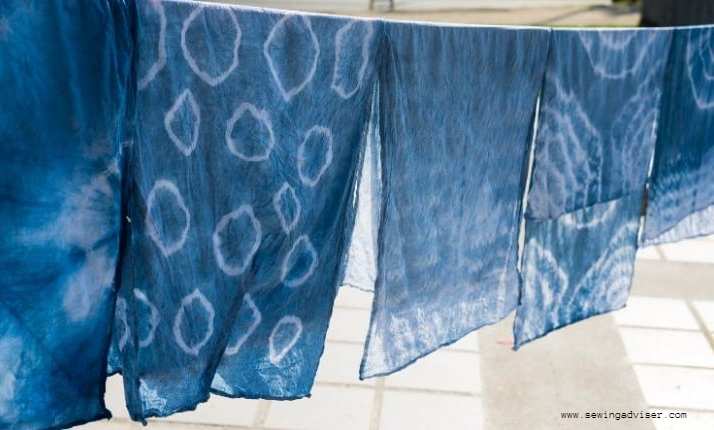
What You Need
An old t-shirt or another piece of fabric, A plastic container, A lid with a hole in the top for your spray nozzle, Fabric paint, Spray paint, Acrylic craft sealer, and an iron.
Prepare Your Fabric & Cover Surfaces
Before you get started, grab an old t-shirt or any other piece of fabric to use as a test. Spread it out over your work surface to protect it.
Prepare Your Spray Bottle
Make a hole at the top of your plastic container that’s large enough for the spray nozzle from your can of paint. If you don’t want to use a container, then any object will work as long as it’s big enough to fit the nozzle; otherwise, your paint will make quite a mess.
Mix Your Paint
Create your fabric paint mixture by following the package directions to a T. Make sure it is mixed evenly and isn’t watery or lumpy; if it’s the latter, mix in a few drops of water until smooth again.
To get a smooth paint job without any drips, your paint needs to be consistent; not too thick or thin. If it’s too thick, however, your painting will come out in spurts rather than a consistent layer.
Spray Paint Your Fabric
To paint your fabric, hold the nozzle about an inch above it and cover evenly with a light to medium coat (you don’t need an excessive amount of paint that it runs, however, you may not need it to be see-through).
Let Your Fabric Dry
After your fabric has been drying for around 10 minutes, try to wait for 30-40 more minutes before handling it (but if you can patiently leave it alone for even longer than an hour, that’s optimal).
Seal Your Spray Paint Fabric
Apply a light mist of acrylic craft sealer to your fabric. You don’t need to be accurate; just ensure every part of the surface is coated.
Place your iron on its lowest heat setting and press down on the area where your project is located.
Put an old towel or piece of scrap fabric over your project to shield it while you’re Ironing (make sure the towel doesn’t adhere to the spray paint).
Let Your Project Dry
Whether you let your project dry flat or by hanging, it is up to you. Just make sure that it is entirely dried before touching (which could take a few hours to an entire day) so the layers of paint don’t get smudged.
Enjoy Your New Spray Paint Fabric Project!
Your project won’t be completely done until the paint has dried. Once it’s dry, you can use your project as you originally intended.
If you’re not happy with the results though, don’t worry! Washing your project will make the colors more permanent so that you can try again if needed.
If you think that stenciling is too much effort, don’t give up just yet! You can always use fabric spray paint as a handy alternative. Just remember not to wash or dry clean your clothes until the project is done, so you won’t accidentally ruin all your hard work.
How to Spray Paint Clothing
Show off your unique style by spray painting denim clothing! Jeans, shirts, and jackets made out of denim are durable and easy to personalize.
Before you break out the paint make sure you have the right type of paint for your project.
Clothing is flexible and needs to be able to move with our bodies. Any paint we use on clothing must not inhibit this flexibility.
A big problem, especially with denim, is that paint can dry on the surface of the fabric and crack when the fibers are moved.
The best way to get a long-lasting finish on your clothes is to use top-quality, brand-name paint that has built-in flex. ordinary clothes will do; However, avoid tight-fitting garments like jeggings because any paint will struggle to cope with them. Lastly, make sure you set the paint using heat for extra protection.
How to Paint Upholstery
The process of painting upholstery is not complicated and uses many of the same fabrics as clothing or curtains. The main difference will be needing more space to spray paint your sofa.
With that being said, a common issue with upholstery is paint transfer. Unlike clothing, you have to be sure the paint is set correctly into the fabric of the furniture. Otherwise, when using the furniture, the color from the paint will end up on your clothes.
Keep in mind the textile of your upholstery when you’re trying to repaint it. For example, leather will not take to spray paint as well as other fabrics and the result could be a patchy, peeling finish. It is better to use dyes that are made specifically for leather.
Can You Use Regular Spray Paint on Fabric?
Spray paint can customize different materials such as metal, plastic, wood, and fibers. Also, the types of surfaces you can paint are endless like cars, fences, and fabrics.
Most spray paint is used on materials such as metal, wood, or plastic. However, fabric spray paint is a unique mixture of nontoxic chemicals that are meant to come into close contact with both human and animal skin.
When it comes to painting, always choose the paint type that is recommended for the item.
For example, using spray paint intended for metal on your tee shirt could end up risking your health.
It may cause an allergic reaction, rashes, or illness. Not only that but hugging your dog could prove unhealthy or fatal to them too!
How to Protect Your Fabric with an Acrylic Sealer
Applying an acrylic sealer is the best way to keep your spray paint from ruining the fabric. The sealer will fix the paint in place after each step of your project, so you don’t have to worry about it being damaged during washing or ironing.
Don’t Go Cheap on the Paint
For your paint to stick to the fabric, you need a good acrylic sealer. Design Master from Walmart is one of the cheapest options out there, but it’s not worth it if it costs less than $5 per can.
This brand usually doesn’t dry quickly and has trouble adhering well to different types of fabrics. Most people say that this kind of paint is simply colored glue, so save yourself some money and use Elmer’s instead.
Don’t Use Iron-On Vinyl Fabric Paint
Many people wrongly assume that heat-transfer vinyl will adhere to their fabric without burning it in place.
However, this is incorrect information. When an iron passes over heat-transfer vinyl, it melts the glue backing and bonds the design onto the surface.
If you try to use heat to seal this type of paint, all that will happen is smearing the paint into your fabric.
Things Not To Do When Spray Painting Clothes
Let’s avoid common mistakes by discussing how you can do it right.
Don’t Iron It!
Don’t iron your painted fabric before washing it. The heat from the iron will make your paint peel off and leave a mess.
Don’t Use Regular Spray Paint
Don’t bother with this. It won’t withstand regular use, it’ll scorch your fabric if you try to iron it on, and it’s not worth the effort. This step will take more time than it’s worth, so just skip it.
Don’t Wash It Until After You’re Done Painting
Allow your fabric paint to dry just enough so it adheres to the fabric, but don’t let it sit for too long, or else it will be difficult (if not impossible) to get the paint out in the wash.
If you wait too long before putting your project in the wash, the paint will have dried and set completely, ruining all of your hard work.
If your fabric is made of anything other than cotton, the design may not appear on the surface of the cloth after running it through the wash.
You can always turn it inside out to avoid this problem. If you see that your stencil isn’t sticking properly to the surface of your project before beginning, allow for it to dry and try again.
Does Spray Paint Wash off Clothes?
As long as you let it dry, the chance of spray paint residue staining your clothing is slim to none because it’s formulated to stick to almost any surface and isn’t water-soluble.
Though it’s not common, paint can sometimes transfer from your clothing to other surfaces if they come into contact. If you’d like to avoid this, seal your project with heat once it dries.
How Do You Care for Spray Painted Fabrics?
The spray paint will be permanent after it has dried for a few days. Most manufacturers suggest waiting 3 days before getting the fabric wet. If you want to keep your garments looking nice, avoid products that might remove the color or bleach the fabric.
The primary concern is to make sure you use precise paint for the fabric. This will secure a result that lasts longer, is more colorful, and won’t damage the clothes.
Will Spray Paint Crack On the Fabric?
Yes, it’s not uncommon for spray paint to crack on fabric. This is especially the case with acrylic paints.
If you want your project to be more durable and last through washes, then I recommend using something like Tulip ColorShot Upholstery Fabric Spray Paint or Dupli-Color Vinyl and Fabric Coating.
Will You Be Able To Iron the Fabric Spray Paint?
Yes, If you use paint that doesn’t require searing, then you can iron it. However, some paints may harm the fabric due to extensive heat exposure over time.
If you want your project to last for long-term use, we recommend using Tulip ColorShot Upholstery Fabric Spray Paint or Dupli-Color Vinyl and Fabric Coating.
How to Remove Spray Paint From Fabrics?
Saturate the paint with mineral spirits, hot pepper sauce, citrus cleaner, orange oil remover, rubbing alcohol, or nail polish remover.
After 20 minutes have passed, saturate the cloth once more before rinsing it completely with water. If the paint remains after this process is repeated a few times, Z you may want to consider using a power washer.
How Long Does Spray Paint Take Time to Dry on Fabric?
The time it takes for the paint to dry on your fabric will vary based on the type of fabric and how much paint you use.
In some cases, it can take a few hours for the drying process to be completed. As such, you need to have a plan in place before beginning your project.
How Long Will Spray Paint Stain Fabric?
Although most spray paints won’t leave stains on fabric, always test a small area first. And if some paint does get transferred, don’t try to remove it completely treating it as an oil stain with rubbing alcohol or orange oil remover should do the trick!
How Long Will Spray Painted Fabric Last?
Depending on the type of fabric and how thick you make the paint layer, it will affect how long the project lasts.
If you use a light-colored or faded-prone fabric, then the paint may not last as long. Also, if exposed to high temperatures frequently, some paints may start to crack.
How Do You Keep Paint From Cracking On Fabric?
To prevent paint from cracking the fabric, ensure good adhesion and heat set with an iron after it dries. Further, protect your project by sealing it using one of the following compounds: spray enamel, clear acrylic spray, or embroidery floss sealant.
Conclusion: Can You Spray Paint Fabric
When you want to paint on fabrics, there are only a pair of considerations. First, be sure that you read the directions for your type of fabric and spray paint. Additionally, use a heat-setting compound if the project is going to experience high temperatures or lots of sun exposure.
Last but not least, think about sealing your project so that the paint doesn’t fade or crack over time. If you take these precautions whenever you start a new project, your painted fabrics will last for quite some time!
I hope this article helped you feel more confident about fabric painting let me know in the comments below if you’ve given it a try and how it went!
FAQ’s: Can You Spray Paint Fabric
Will Spray Paint Make Fabric Stiff?
Yes, spray paint can also make the fabric stiffer. So, If you are worried about the fabric becoming stiff after spraying paint on it, then you can use an acrylic spray or embroidery floss sealant to protect it.
How Does Heat Effect Fabric Spray Paint?
You need to move quickly when you use heat on fabric-based material, otherwise, the paint will not set. Most paints require a certain amount of heat in order for the finish to last longer and prevent cracks from forming over time.
What Type Of Spray Paint Is Permanent On Fabric?
Though most spray paints aren’t long-lasting, there are some brands that can withstand washing and exposure to sunlight.
Does spray paint on fabric fade?
You can most definitely use spray paint on fabric- but make sure to seal it afterward! This will help preserve the color and prevent fading over time.
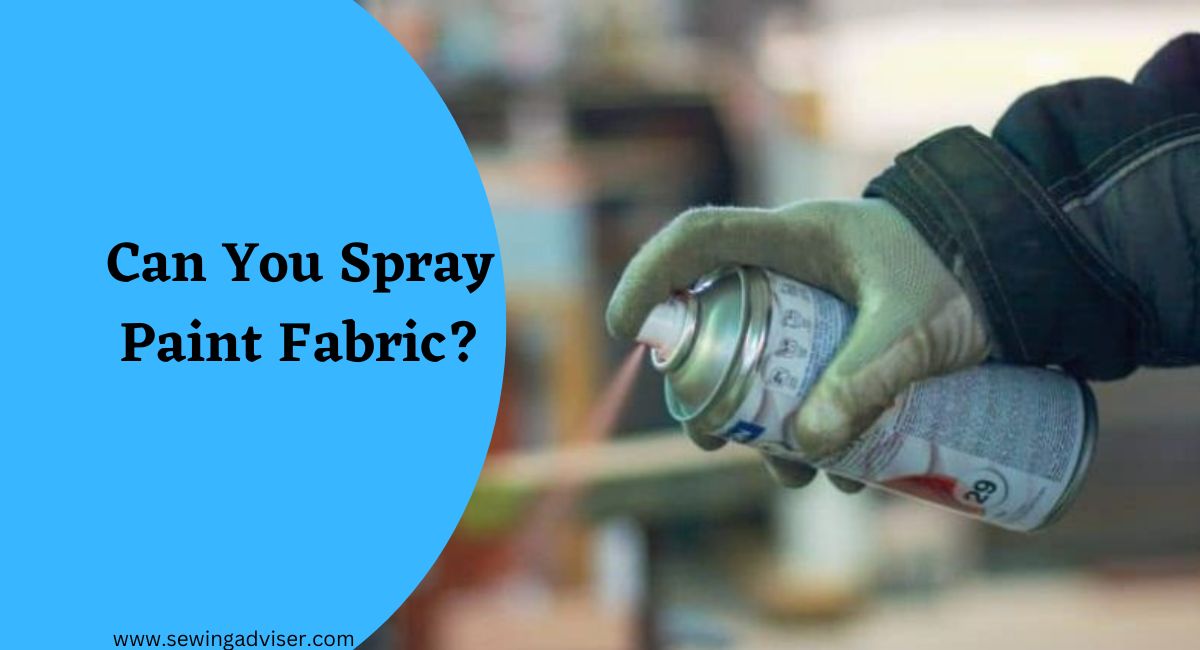
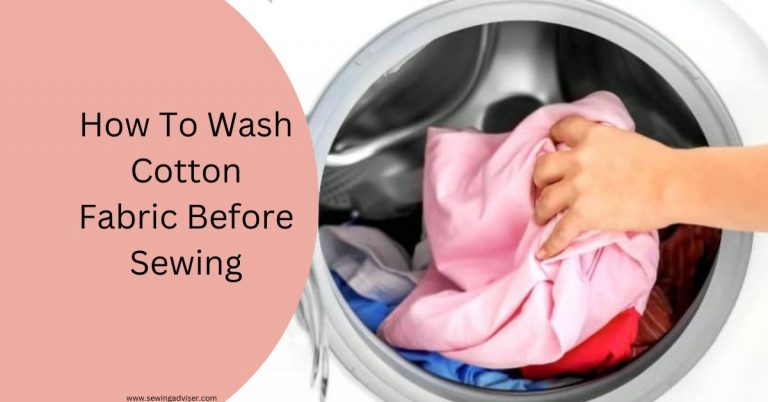
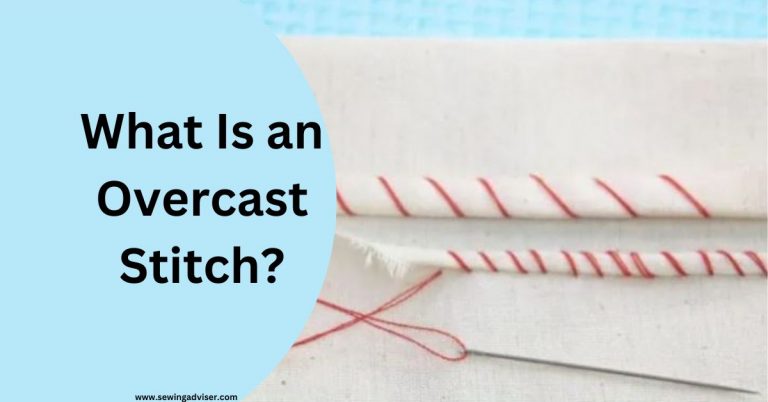



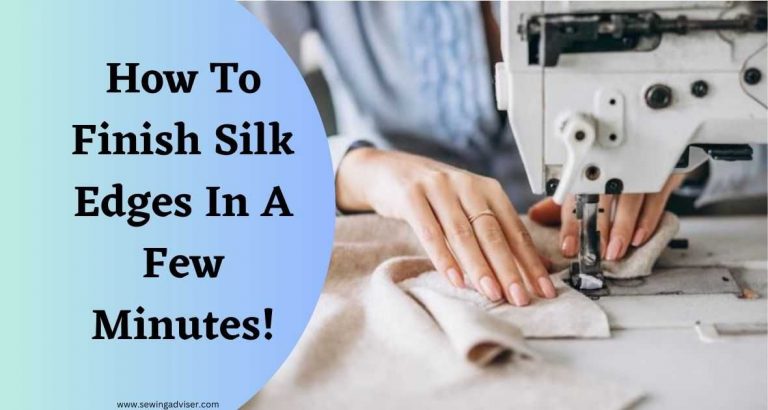
10 Comments